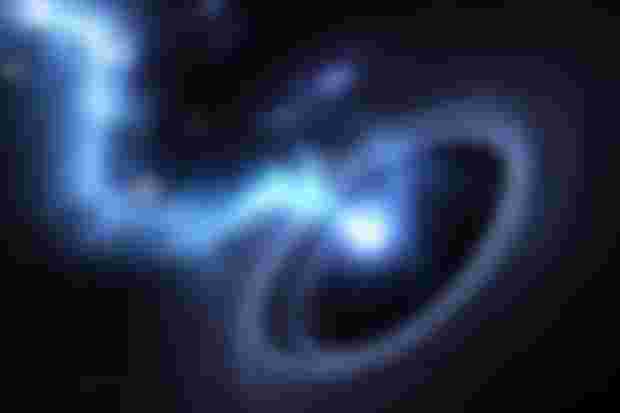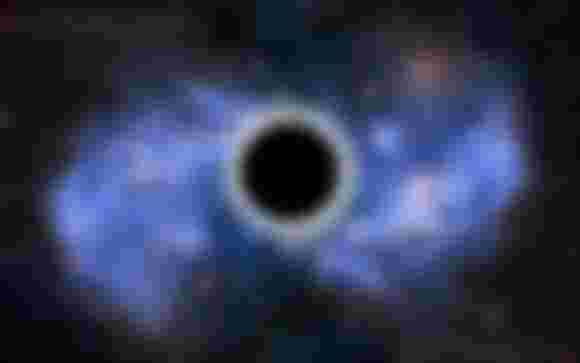
#Black_Hole_The_Cosmological_Demon:
# Episode_3
In the last two episodes, I tried to discuss in detail about the identity and types of black holes. I will not discuss more today, because to understand this, we have to look at some mathematical issues. So in order to make these issues easier to understand, I am focusing on only one issue, and that is the temperature of the black hole.
★★ #blackhole_heat ★★

We know that a black hole is an object in the universe from which nothing, no object, no light is released. It absorbs everything from our visible world. When we look at the thermal state of an object, we measure the temperature, which is basically the level of radiation emitted from the object. That is, the amount of radiation or heat that objects emit. But a black hole pulls everything inside, emits nothing, but its temperature too!?! Then the temperature should not be! But, no. There are temperatures. However, it is very, very low. For example, the mass of the Sun is a million times heavier than the mass, meaning that the temperature of a normal supermassive black hole is only 1.4 × 10 ^ -15 k!
So, let's see, since a black hole does not emit any radiation, how is it possible to have its temperature? Scientists had no idea about this before But after the theory given by the theoretical physicist, Stephen Hawking, scientists can understand that black holes can also have temperature. But how it is possible, in fact, is a little different from the stars. The more energy a black hole absorbs from the universe, the more energy it consumes due to the quantum effect, for which it creates a thermal atmosphere, which creates a temperature. The black hole thus loses its mass day by day by consuming energy, and at some point becomes exhausted, this is called #Evaporation_Of_Black_Hole in the language of Hawking's theory. (I will discuss the evolution of black holes in the next topic, then there will be a clear idea)
We usually see that the higher the mass of a star, the higher its temperature. Of course, there are reasons for this. Because, if the mass of the star is more, the pressure in the center is also more. And the higher the pressure, the higher the level of nuclear fusion. And so the more heat and energy is generated. So the temperature also rises.

For example, the surface temperature of our sun is 5.6 Kelvin and the center temperature is 150 million Kelvin and the pressure is 100 billion times higher than the pressure of our Earth's atmosphere.
The temperature of the center of the star must always be above 100 million Kelvin, because the minimum temperature is required for the nuclear fusion reaction to begin. Without this temperature, the nuclear fusion reaction will not start, and neither heat nor light will be generated. As a result, the stars will not be born. Then it may exist as a monstrous planet Like our Jupiter. Scientists call it "#Failed_Star".
Because Jupiter's current mass, and the pressure and heat at the center compared to it, if it were ever 60 times heavier than it is now, it could become a #red_dwarf star!
Anyway, let's see in the case of black holes. The mass of a normal stellar black hole is equal to at least 10/20 solar masses. If their mass is much higher, then their temperature will be very high! Is that really so?
No, in the case of black holes it is the complete opposite. Black holes do not emit any radiation! Scientist Stephen Hawking showed that the mass and temperature of a black hole are opposite to each other. That is, as the mass increases, the temperature decreases, and as the mass decreases, the temperature increases. Since a black hole emits no radiation, its temperature is absolutely zero! Isn't that so? But, no. The temperature of a black hole is not zero at all. More than zero. But that is very, very rare. Near absolute zero but it is never absolute zero.
We notice this equation,
T = (h × C ^ 3) / (16 × pie ^ 2 × G × M × Kb) ..... (i)
This is the temperature indicator equation of the black hole given by Stephen Hawking. In this equation, if we notice, we see, T proporional to 1 / M. That is, the temperature decreases as the mass increases.
In this equation,
h = Planck's constant
C = speed of light through zero
G = Newtonian gravitational constant
M = mass of the black hole
Kb = Boltzmann's constant.
Here, we get a value of constant, i.e. (h × c ^ 3/16 × pie ^ 2 × G × kb) we get 1.2 × 10 ^ 23.
So, to simplify the equation,
T = (1.2 × 10 ^ 23) / M ...... (ii)
If (ii) for the sake of understanding how the number T came to be, we could write the equation (i) not like this,
T = (h × c ^ 3) / (16 × pie ^ 2 × G × Kb) × 1 / M
Or, T = (1.2 × 10 ^ 23) 1 / M
Or, T = (1.2 × 10 ^ 23) / M
Then we can easily find the temperature of a black hole from this (ii) equation. For example, the temperature of a black hole in the equator of the Sun will be only 63 nanocelvin! Which, of course, is a fraction of Kelvin's 63 billion! Extremely cold, but not absolute zero. Again, the supermassive black hole at the center of the Milky Way, named "# Sagittarius_A", which is about 4.3 million times more massive than the Sun, has a temperature of only 0.000015 nanocelvin. Thus, as the mass of a black hole increases, its temperature will decrease, but it will never be zero. On the other hand, the lower the mass of the black hole, the higher its temperature. For example, the temperature of a black hole in the lunar equator would be about 1.65 Kelvin. Again, the temperature of the microblocks will be higher than the temperature of the center of the sun! Microblasts, they say, will have a mass similar to that of Mount Everest, but they will be stored only a few millimeters to nanometers. Where the mass of Mount Everest is about 7.5 × 10 ^ 14kg and its height is increasing by 7.1 cm every year.
#To_be_continued


The article was interesting to read